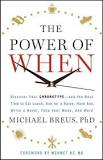Ad Mining for Blog Content Writers
Blogs are not ads, to be sure, and yet blog content writers can learn a lot from browsing the advertisements, I’m convinced. To test that theory, I decided to browse a collection of 50 different print ads published in the November 2016 issue of TheHomeMag, a free home improvement magazine.
Hitting precisely the right “advertorial” note is one of the big challenges in corporate blog writing, I knew. In fact, one point I’ve consistently stressed in these Say It For You blog content writing “tutorials” is how important it is to provide valuable information to readers, while avoiding any hint of “hard sell”.
Quite a number of the HomeMag print ads, I found, stressed price and cost savings:
- “We’ll beat any quote by 10% to 60%!”
- “Remodel your kitchen at an affordable price!
- “Save big on kitchen countertops & cabinets.”
A second category of ad focuses customers’ attention on “the hurt”, meaning the risks they’re facing and the problems they have.
- “Protect your chimney from winter.”
- “Cabinets looking outdated?”
- “Common countertop problems resolved.”
- “Never paint again!”
- “Ugly tub? Reglaze it.”
- “Inefficient windows can be scary!”
- “Foundation or moisture problems?”
In blog content writing, once readers are hooked by your understanding of their “hurt”, you can offer the “rescue”, the solutions your expertise and experience can bring to the table. (I take a moderate view, preferring content that emphasizes the solutions to the problems, rather than taking a “fear-mongering” approach.)
The HomeMag ads that I liked best got readers to visualize themselves using and enjoying the product or service.
- “Experience the beauty of outdoor lighting.”
- “Access everything you need, every time you need it.
- “Turn your backyard dream into a reality!”
- “Host Thanksgiving in your new kitchen.”
- “Refinish your existing tub & tile in time for holiday guests.”
When you’re composing business blog content, I tell writers, imagine readers asking themselves – “How will I use the product (or service)?” “How will it work?” “How will I feel?”
Blogs are not ads, to be sure, and yet blog content writers can learn a lot from browsing the advertisements.




 Those word “skeletons” can be use, I explained:
Those word “skeletons” can be use, I explained: Learning that someone had posted a negative remark about him on social media,
Learning that someone had posted a negative remark about him on social media,
Follow us online!